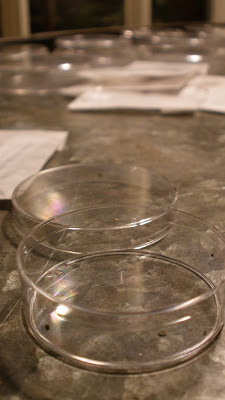I have recently become intrigued by the unusually large amount of phytomorphological variation there is throughout the Lophophora williamsii species. Variation can be seen between almost every wild 'population' of lophos. The population of wild plants is recorded from the nearest geographical region such as a town name or national park name. Plants can vary in petal colour, size, epidermis colour, pupping style etc. These variations have been documented and studied but I am sure there is nothing quite like seeing them for yourself.
I have re-examined my germination technique & I am confident that this will be my most successful sow yet! I am planning on sowing all of my seeds onto petri dishes. This will benefit my germination rate & increase seedling mortality.
It will eliminate all need for organic matter at this fragile stage which often kill my seeds from either insect attack or mould; the seedlings will be less likely to be accidentally damaged and it allows for much easier storage & labelling of seedlings.
Being on a budget meant that I couldn't buy every variation of lophophora on the internet (though I dream to). I chose the following varieties after reading that they were either the most beautiful, interesting or outstanding in some way.
&

The medium I chose to use is washed river sand. I sieved the sand to obtain a smaller medium and rinsed it thoroughly to remove organic matter, I then sterilised the sand in the microwave which also helpes to totally dry the sand ready for distributing into the petri dishes.

I used roughly 1/2 tsp in each dish, but really just enough to cover the surface of the dish. This will allow the environment to remain moist & won't burry or smother the seeds.

The seeds were taken out of the packets & carefully deposited onto a separate larger petri dish. From here they were counted and checked.


I used tweezers to sow the seeds into their individual dishes, I find that standard tweezers are best for me, giving me enough dexterity. Other people use dampened tooth-picks to sow with.

Once the seeds are on the substrate I labeled the dish & recorded the date & seed number (Just being anal).
Once every dish was sown I watered them by misting the dishes. To begin the germinating the atmospheric humidity must be kept high, with the dishes having lids and with infrequent misting the humidity will be prefect for the seeds.
I'll be keeping the seeds under a simple bulb to provide light & a small amount of heat - as the daytime temperature is already close to correct.
For the 100X seed lot I used a slightly larger dish to reduce overcrowding although I doubt this will be a problem.

Once the germination rate in each dish is acceptable I will transplant them over to a seedling soil mix in a pot.















